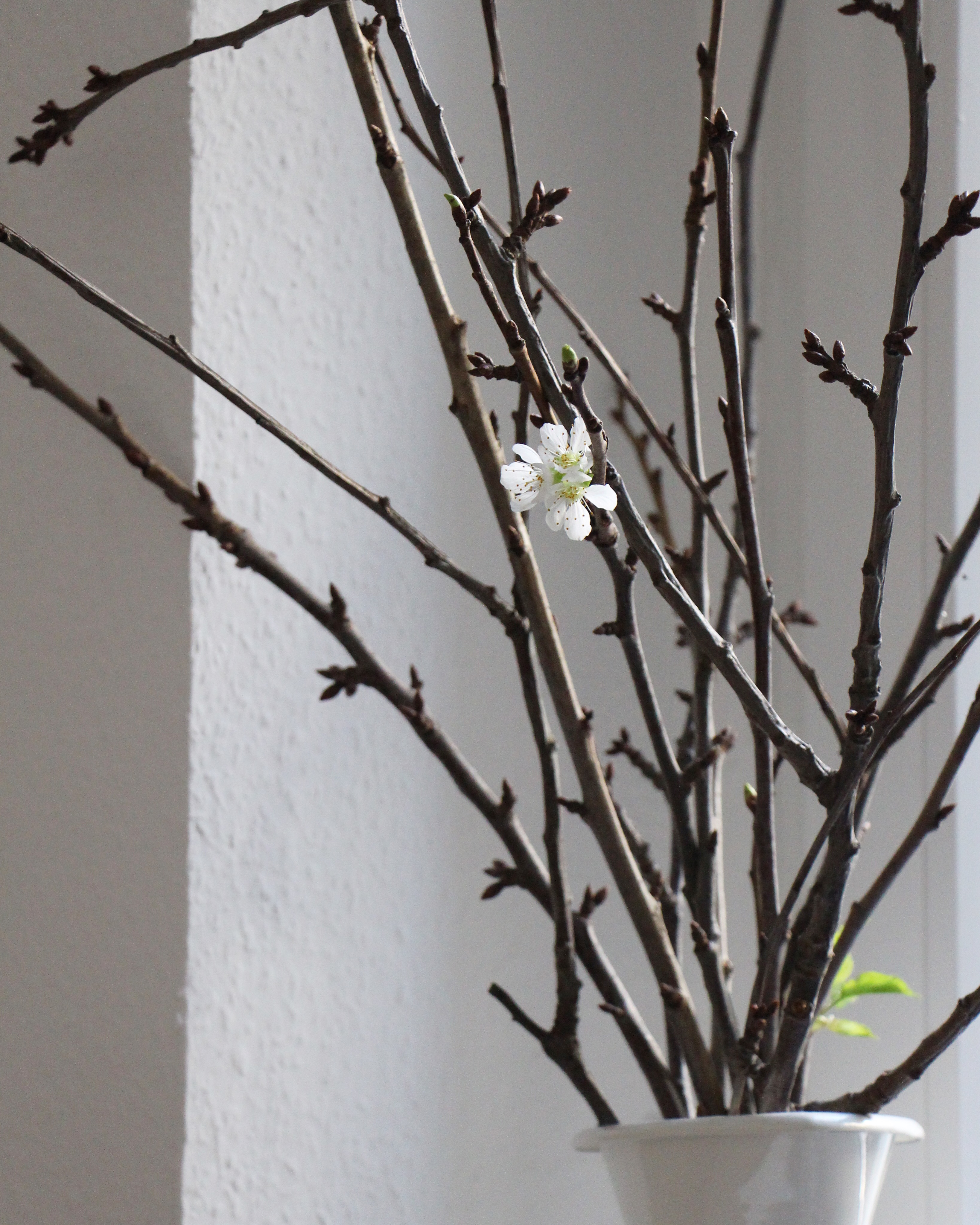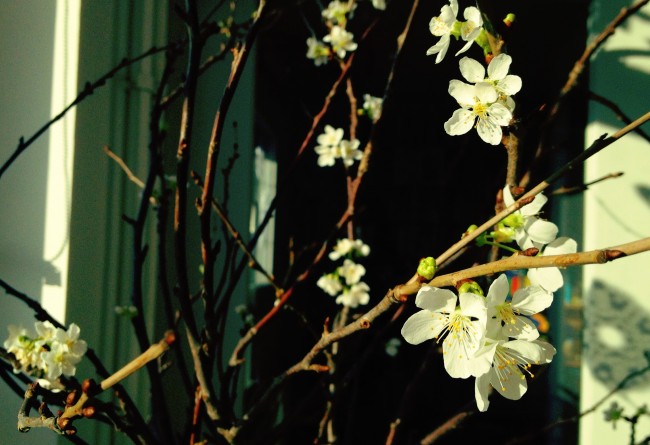
Branches for St Barbara’s Day
Today I wanted to tell you a bit more about one of the traditions I mentioned in my recent post on ‘How to Celebrate Christmas Like a German‘. At this time of year, we’ve just finished mourning the passing of the colourful Autumn foliage, and are starting to deck our houses out in winter greenery and perhaps a few poinsettias to add a spot of colour. Spring and the thought of fresh buds and blossoms seems a long time off. That’s why St Barbara’s Day and its ‘Barbara Zweige’ (Engl: Barbara branches) is one of my favourite traditions in the German Advent season!

Who is St Barbara, you may ask? And you can be forgiven for not having heard much about her. Between St Martin and his colourful lantern processions in November, and St Nicholas and his gift bringing habits just a few days away, poor old St Barbara doesn’t get as much of a mention, even though she is still celebrated in many regions of Germany today.
Barbara was the daughter of a rich merchant in Asia Minor, who died a martyr’s death in the 4th century AD, allegedly beheaded by her own father after being cruelly tortured for refusing to renounce her Christian faith. On the 4th December, her feast day in the Western Christian church, people would go out and cut branches of fruit trees, such as cherry, apple or plum, and stand them in vases of water in a warm place inside their home. If you don’t happen to have an orchard or fruit tree near by you can cut, then in Germany you can also buy ‘Barbara Zweige’ in many florist shops. Unfortunately, the florist shops here in Scotland don’t sell any, and our shared garden doesn’t have a fruit tree, but one of the other mums from school very kindly brought me in a bunch of branches from the fruit trees in her garden!

“A shoot will come up from the stump of Jesse; from the roots a branch will bear fruit”. (Isaiah 11:1)
According to legend, Barbara’s father shut her away in a tower, hoping that isolation would make his daughter see sense. On her way to her tower prison, she supposedly caught her robe on a branch. She broke off the branch and took it with her, standing it in a vessel full of water, where it blossomed exactly on the day she was later sentenced to death. It is thought to be a symbol of good luck for the next year if the buds on your ‘Barbara Zweige’ blossom by Christmas Eve. The blossoms are also a reminder of the prophecy from the biblical verse Isaiah 11:1 “A shoot will come up from the stump of Jesse; from the roots a branch will bear fruit”. I think it is such a beautiful tradition. And so far we’ve always been lucky, and our branches have always bloomed!








Treasure Every Moment
This is so interesting! I’ve never heard of celebrating St Barbara’s Day, so I’ve learnt a lot :)
Rochelle
What a lovely tradition – I’ve never heard of it (or St Barbara!) before. I love the idea of fresh blossoms during the winter. My other half is half-German (if that makes sense!) so I will have to test him to see if he knows about this. We have lots of wild fruit trees around here so this might be a tradition we have to adopt!
Talya Stone
How interesting! I’ve never heard of St Barbara. It reminds me a bit of the story of Rapunzel…
Claire
Another lovely tradition. I always feel like I am learning when I read one of your posts.
I love that x
Kara Guppy
I have never heard of St Barbara and such a bittersweet story
Ella @Typical Mummy
This is such a beautiful tradition. I had never heard of St Barbara but my grandmother was called Barbara so that makes it even more special!
Mel
That’s such a lovely tradition, and one I’d never heard about. Thanks for sharing the story of St Barbara. I find the origin of traditions fascinating.
Pingback: Planning for December – The Bear & The Fox